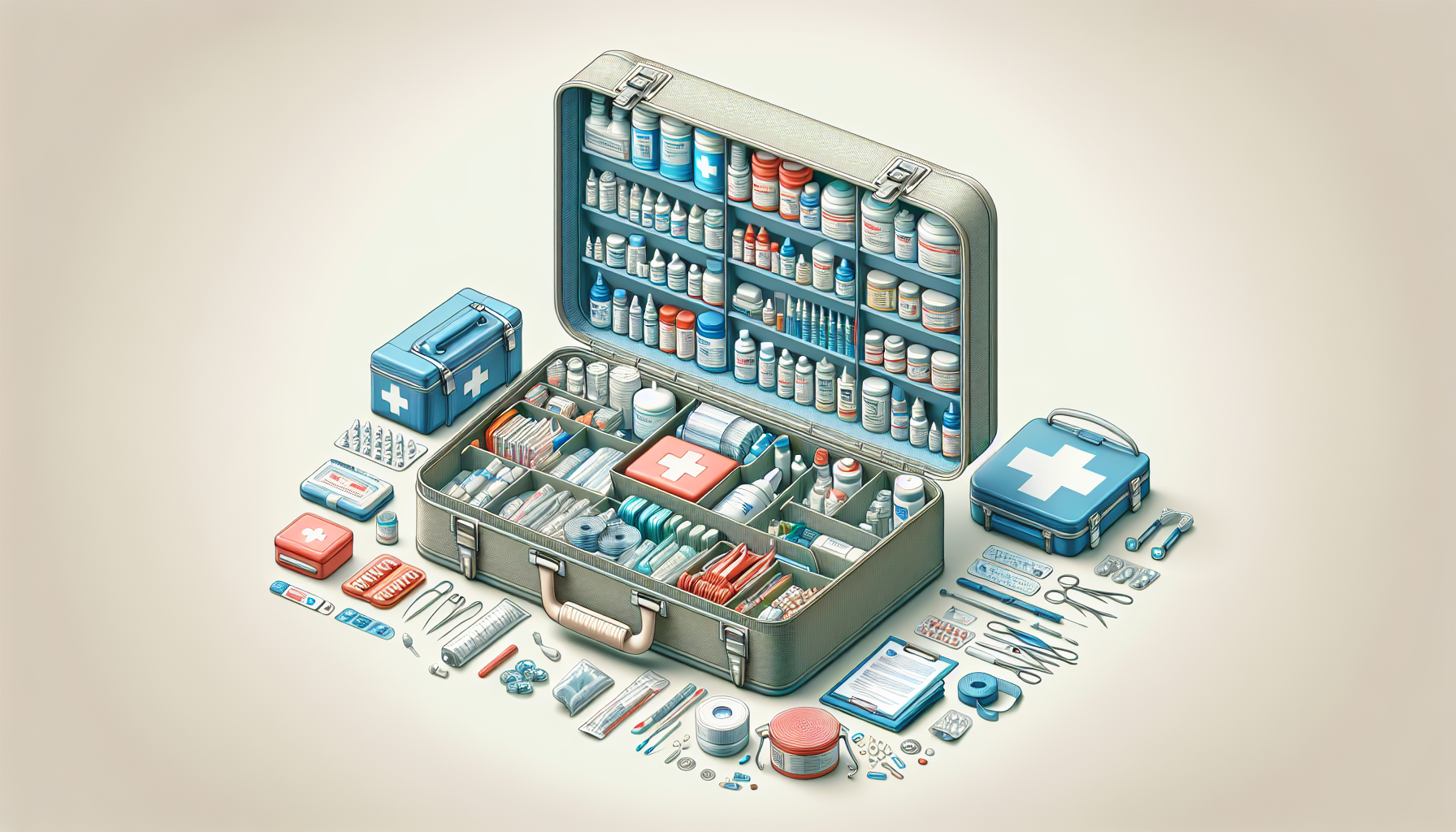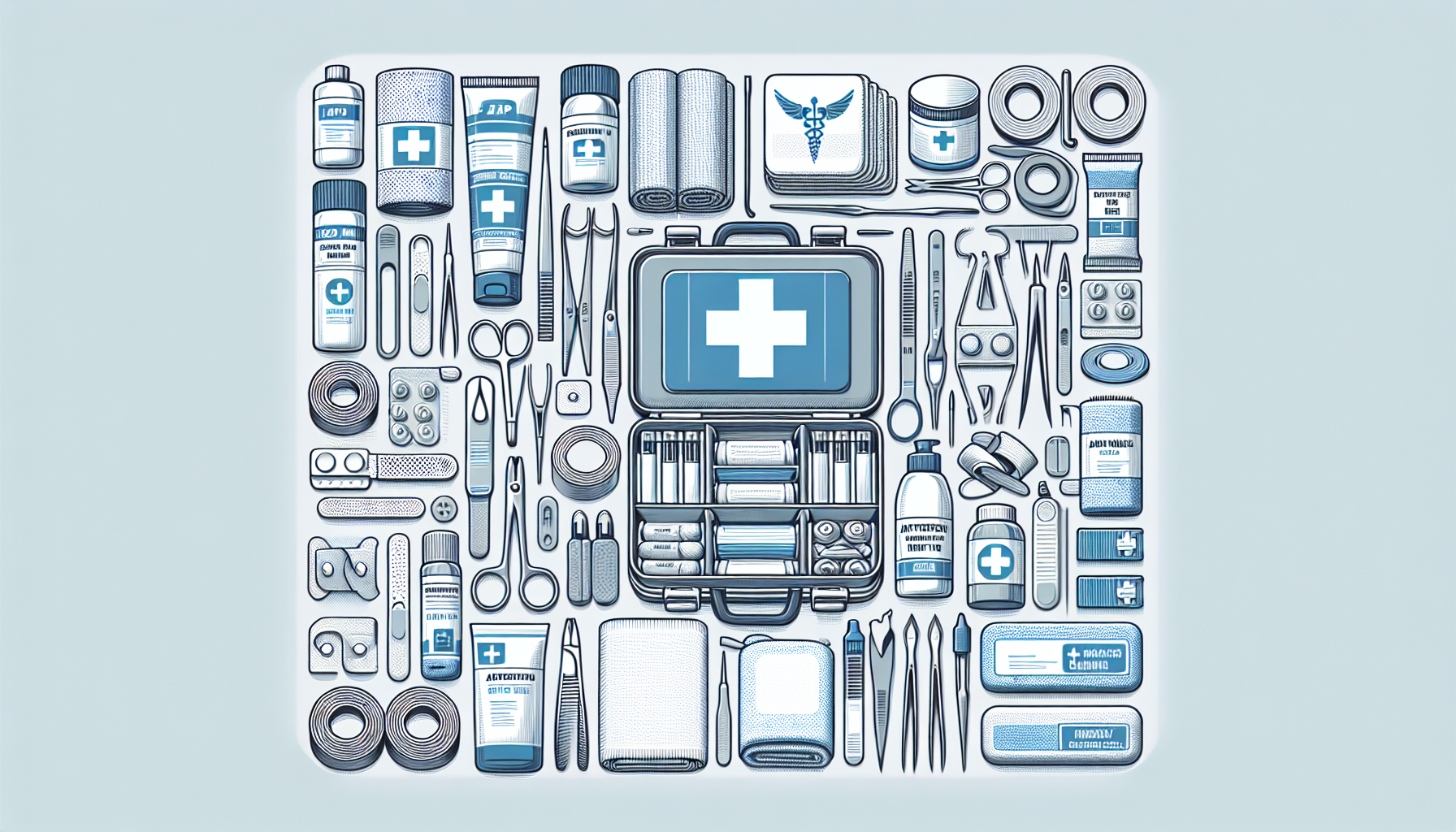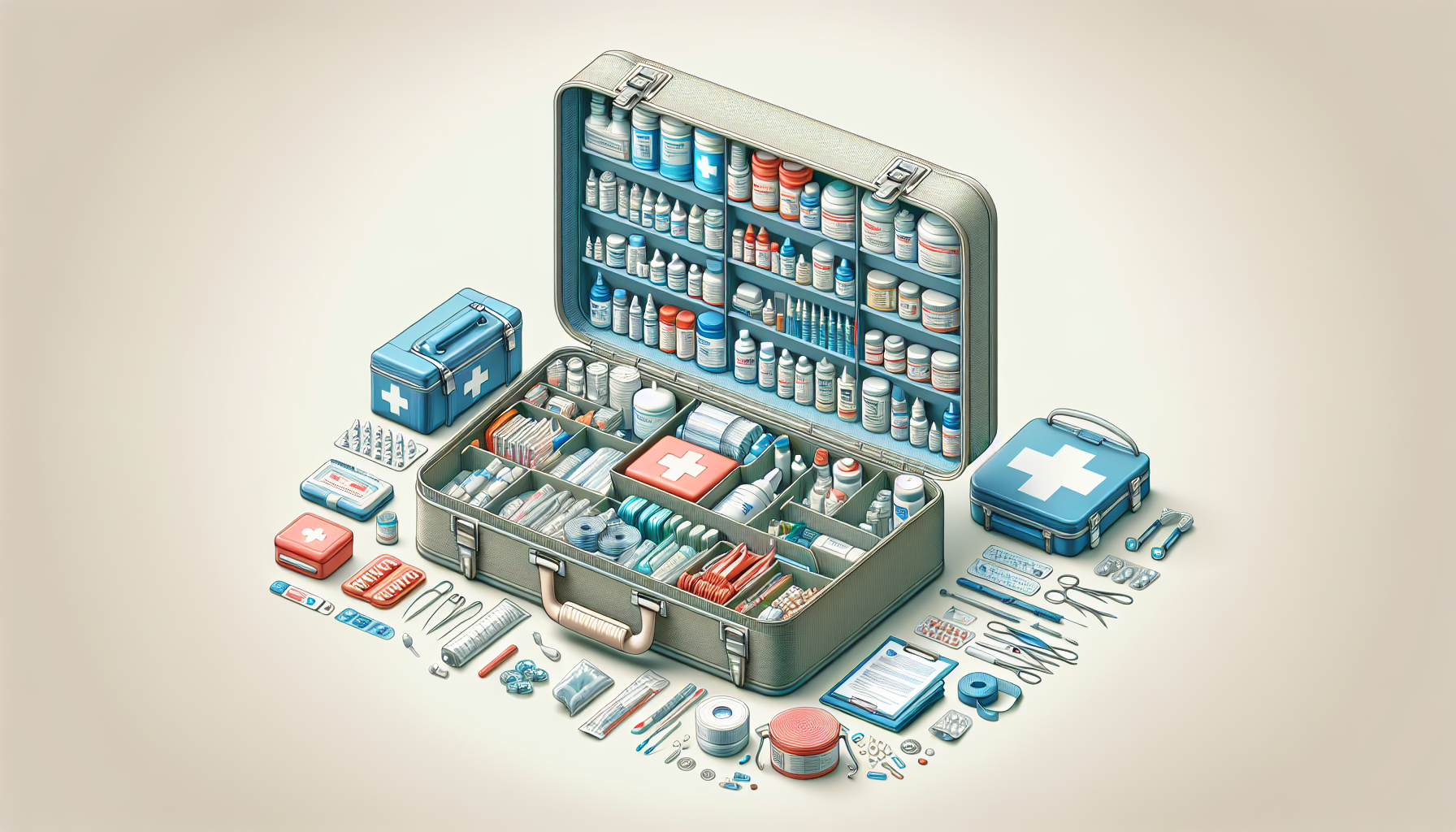In this article, you will discover valuable insights and practical tips on how to be prepared for any medical emergency or first aid situation. Whether you are a parent, a caregiver, or simply want to be ready to assist in times of crisis, these best practices will provide you with peace of mind and the knowledge to respond effectively. From assembling a well-stocked first aid kit to learning life-saving techniques, you’ll find everything you need to confidently handle emergencies and ensure the safety of yourself and others. So, let’s dive in and equip ourselves with the necessary skills to respond swiftly and effectively in any medical emergency.
Understanding First Aid
Importance of First Aid Training
First aid training is crucial for everyone, as it equips you with the skills and knowledge to provide immediate assistance in medical emergencies. Whether you encounter a minor injury or a life-threatening situation, having the ability to confidently administer first aid can make a significant difference in saving lives. By learning first aid techniques, you become a valuable asset in any emergency situation, and your quick response can potentially prevent further harm or even death.
Common First Aid Techniques
When faced with a medical emergency, there are several common first aid techniques that can be applied to provide immediate relief and stabilization until professional help arrives. These techniques include CPR (Cardiopulmonary Resuscitation), controlling bleeding, treating burns, managing fractures and sprains, and handling poisoning and allergic reactions. By understanding these techniques and practicing them regularly, you enhance your ability to respond effectively in stressful situations.
Emergency Preparedness
Creating an Emergency Plan
Creating an emergency plan is vital to ensure that you and your loved ones are prepared for any unforeseen medical emergencies. Start by discussing and identifying potential risks in your environment, such as natural disasters or accidents, that could require immediate medical attention. Develop a communication plan, designating a specific meeting point and emergency contact person. Additionally, make sure to include crucial information about allergies, medical conditions, and medications of family members in your emergency plan. Creating and regularly updating your emergency plan ensures that you are well-prepared and can act quickly when faced with a medical emergency.
Assembling a First Aid Kit
Every household should have a well-stocked first aid kit readily available in case of emergencies. A comprehensive first aid kit should include essential items such as bandages, sterile gauze pads, adhesive tape, antiseptic wipes, scissors, tweezers, disposable gloves, a breathing barrier mask, and an instant cold pack. Additionally, it’s essential to include any necessary medications specific to your family members, such as emergency asthma inhalers or epinephrine auto-injectors for severe allergic reactions. Regularly check and replenish your first aid kit to ensure that all items are up to date and in good condition.
Recognizing Medical Emergencies
Signs of a Heart Attack
Recognizing the signs of a heart attack can help you take immediate action to potentially save someone’s life. Common symptoms include chest pain or discomfort, shortness of breath, nausea, lightheadedness, and discomfort in other areas of the upper body, such as the arms, back, neck, or jaw. Promptly calling emergency services and providing appropriate first aid, such as administering aspirin if prescribed, can make a significant difference in the outcome of a heart attack.

Symptoms of a Stroke
Being able to identify the symptoms of a stroke is crucial, as quick intervention can minimize brain damage and improve the chances of recovery. Common signs of a stroke include sudden numbness or weakness in the face, arm, or leg (especially on one side of the body), confusion, trouble speaking or understanding speech, difficulty walking or maintaining balance, severe headache, and sudden vision problems. If you notice these symptoms in yourself or someone else, it is essential to call emergency services immediately for prompt medical treatment.
Contacting Emergency Services
When to Call 911
Knowing when to call 911 is vital to ensure timely and appropriate medical assistance. Emergency situations that warrant a call to 911 include severe bleeding that cannot be controlled, difficulty breathing, chest pain or pressure, loss of consciousness, severe burns, seizures, signs of a stroke or heart attack, and suspected poisoning. It is always better to err on the side of caution and call 911 if you are uncertain about the severity of a situation.
Providing Essential Information
When contacting emergency services, it is crucial to provide accurate and essential information to ensure they can deliver the necessary help promptly. Clearly communicate the location of the emergency, the nature of the situation, the number of individuals involved, and any critical information about medical conditions, allergies, or medications. Stay on the line with emergency services and follow their instructions until medical professionals arrive at the scene.
Assessing the Situation
Scene Safety
Before providing first aid, it is essential to assess the safety of the scene to ensure your well-being and the well-being of others. Pay attention to potential hazards such as fire, gas leaks, unstable structures, or traffic. If the scene is unsafe, focus on removing yourself and others to a safer location and wait for professional help. Remember, your safety should always be a priority.
Identifying Immediate Threats
In some medical emergencies, immediate threats may need to be addressed before providing first aid. These threats include stopping severe bleeding, removing individuals from dangerous environments, or ensuring a clear airway for someone who is choking. Identifying and addressing immediate threats promptly can prevent further harm and create a safer environment for administering first aid.
Performing CPR

CPR Steps for Adults
Cardiopulmonary Resuscitation (CPR) is a life-saving technique used when someone’s breathing or heartbeat has stopped. The steps for performing CPR on an adult include checking for responsiveness, calling 911, performing chest compressions, and providing rescue breaths. Remember to follow the recommended compression-to-ventilation ratio and continue CPR until professional help arrives.
CPR Steps for Children
Performing CPR on children follows a similar approach to CPR for adults, with a few key differences. Begin by checking for responsiveness and calling 911. When providing chest compressions, use the appropriate depth and hand placement for a child. The technique for rescue breaths may also differ for children, so it is essential to receive proper training on pediatric CPR specifically.
Controlling Bleeding
Direct Pressure Technique
The direct pressure technique is the most effective way to control external bleeding. Start by applying direct pressure with your gloved hand or a clean cloth directly on the wound. Maintain pressure until the bleeding stops or until additional assistance is available. Elevating the bleeding extremity above the level of the heart can also help reduce bleeding.
Applying Tourniquets
If direct pressure does not effectively control severe bleeding, applying a tourniquet may be necessary. Use a commercial tourniquet if available, following the manufacturer’s instructions. If a commercial tourniquet is not available, you can create a makeshift tourniquet using a wide, sturdy fabric and a securing device. Apply the tourniquet proximal to the bleeding site, ensuring it is tight enough to stop the bleeding. Remember to note the time of application and inform emergency services about the tourniquet.
Treating Burns
Different Degrees of Burns
Understanding the different degrees of burns is crucial in determining the appropriate first aid and medical response. First-degree burns affect only the outermost layer of skin, resulting in redness and mild pain. Second-degree burns involve both the outer and underlying layers of skin, causing blistering and more intense pain. Third-degree burns are the most severe, affecting all layers of skin and potentially underlying tissues. They may appear charred or white, and the area may be numb. Seek immediate medical attention for third-degree burns.
Immediate First Aid for Burns
Immediate first aid for burns includes removing the source of heat, cooling the burn with cool (not cold) running water for at least 10-20 minutes, covering the burn with a sterile non-stick dressing, and seeking medical attention for severe burns. Avoid applying ice directly to the burn and do not break any blisters that may have formed. Pain relief can be provided with over-the-counter pain medications unless otherwise contraindicated. Keep the burned area clean and protected to promote healing.
Managing Fractures and Sprains
Stabilizing Fractured Limbs
When faced with a suspected fracture, it is crucial to immobilize the injured limb effectively. Start by supporting the injured area with your hands or by using soft padding. Use a splint, if available, to help immobilize the fracture. Avoid putting excessive pressure on the injured limb and reassure the injured person to minimize movement until medical professionals arrive.
RICE Method for Sprains
For sprains, the RICE method can help alleviate pain and reduce swelling. RICE stands for Rest, Ice, Compression, and Elevation. Encourage the injured person to rest and avoid putting weight on the injured joint. Apply a cold pack wrapped in a cloth to the affected area for about 15-20 minutes every 2-3 hours. Compression with an elastic bandage helps stabilize the joint, and elevation helps reduce swelling.
Handling Poisoning and Allergic Reactions
Recognizing Common Poisons
Being able to recognize common poisons is essential in preventing and handling poisoning emergencies. Household chemicals, medications, certain plants, and venomous animal bites or stings can all cause poisoning. Your quick response in identifying the potential source and initiating appropriate first aid measures, such as inducing vomiting (only when instructed by medical professionals) or rinsing affected areas, is crucial in minimizing the impact of poisoning.
Administering Epinephrine
Severe allergic reactions, known as anaphylaxis, require immediate medical intervention, including the administration of epinephrine. If someone is experiencing an anaphylactic reaction and has been prescribed an epinephrine auto-injector, help them administer it promptly. Remember to call 911 even after administering epinephrine, as a further medical evaluation and treatment are necessary.
By understanding the importance of first aid, equipping yourself with essential knowledge and skills, and remaining calm and focused in emergency situations, you can make a significant difference in saving lives and promoting positive outcomes. Regularly refreshing your first aid training and staying updated with the latest techniques enhances your ability to respond effectively and confidently in medical emergencies. Remember, being prepared and having the skills to provide immediate assistance can be the difference between life and death in critical situations.
